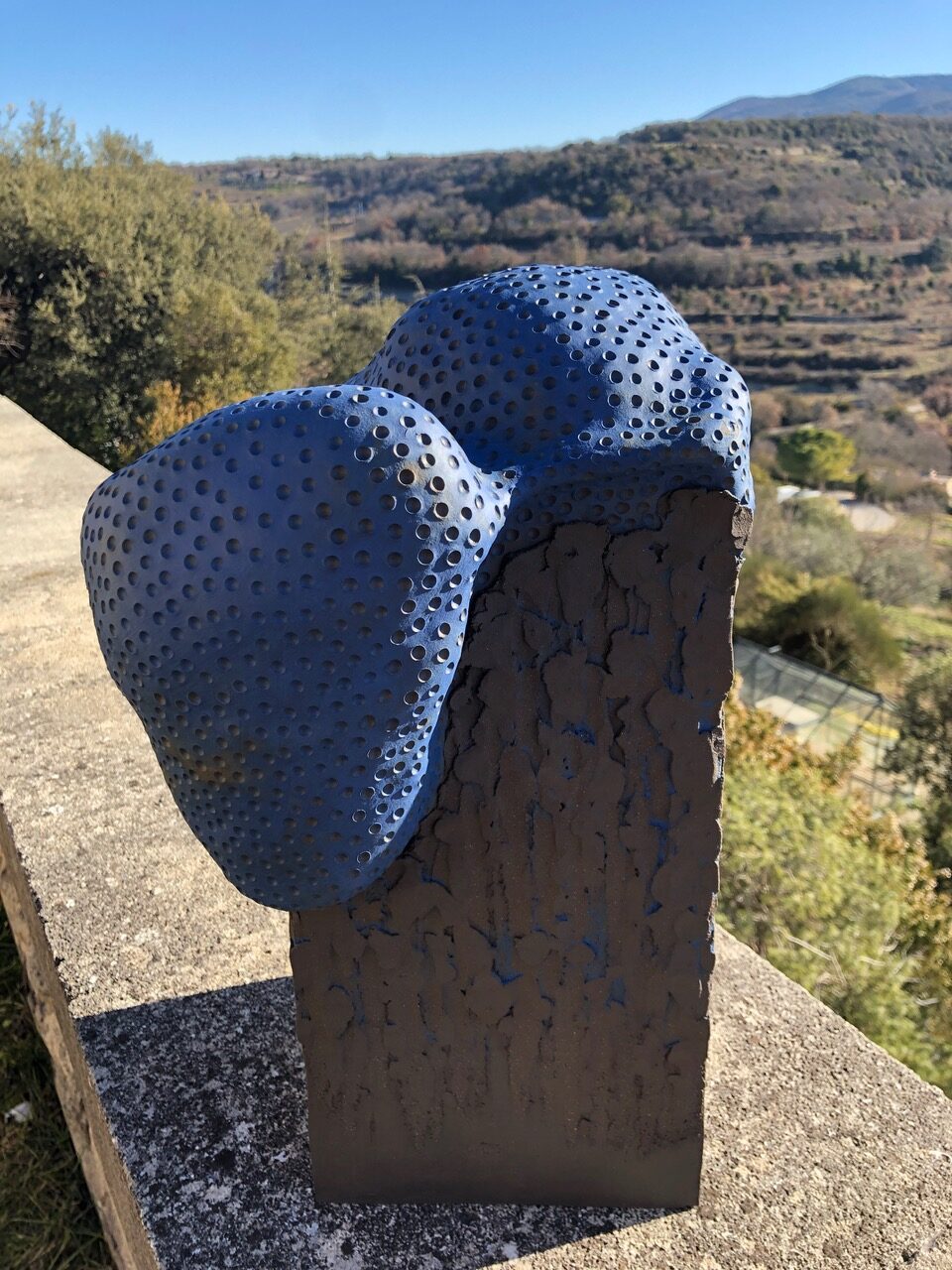Christiane Filliatreau is a renowned ceramist whose work is characterised by a technique meticulously acquired and developed in her studio. She strives to match the form to the idea as closely as possible and uses her technique to serve her inspiration.
Although not explicitly addressed in the text, it is important to emphasise that abstraction of form is often present in Filliatreau’s artistic research. This implies an unavoidable rigour in the selection of materials such as clay and sandstone, which can serve as multiple sources of inspiration. Instead of using the potter’s wheel, she prefers hand-modelling techniques such as boulettes and colombins, which emphasise gesture and finger touch. It feels, rolls, presses, levels, smoothes and assembles the components. If the fingers are stretched and equipped with suction cups and tactile cells, the brain joins the fingertips, giving birth to a clever creature, like an octopus called “avantis”. The sculptor’s sensation has given rise to the form.
However, creation is not limited to the emergence of existence; it is also necessary to achieve the desired form through the process of creation. Christiane always stresses the importance of finishing the interior of the rooms before considering them finished, so that you don’t have to come back to them. This slow and sometimes painful process of maturation eventually leads, at some point, to the break-up of the unity initially envisaged, to separation. It is an inevitable fracture that openly separates two blocs that initially seemed to have been conceived in an illusory dream of unity. To distance oneself from the work that has come into being, it is necessary to consider it as an Other, to confront it directly, and then to observe it before proceeding with the finishing touches.

This phase goes far beyond simple decoration and takes the work to the very edge of its meaning and purpose, as sensed at the time of conception. Accompanying with extreme care the process of creation in soft, raw clay, then that of the gradual disappearance of tangible traces of existence, the artist’s hand arms itself with sharp tools. She pricks, pierces, snips and accompanies the process of revelation of the works, where light and shadow play their part, just like the engraving of lines that encrust and escape. These lines may eventually disappear, overcome by their discontinuity and fragility, only to reappear elsewhere. Time is at work.
Lines, continuous or discontinuous, and dotted lines etched into the crumbly clay are often signatures in Christiane’s work. They act as a trace of presence and inscription in the time of creation and the duration of existence. They resemble strange scores or petrified almanacs, freezing evolution over time, just like the graphs of the brain or heart that reveal their rhythm, their music or even the inescapable law of life and death that they represent.


